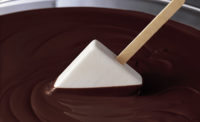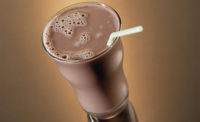
In fact, UHT processing was practically designed for flavored milks. Not only does the high-heat process provide a more practical shelflife for the more exotic flavors of milk, but the process can also enhance the taste characteristics of certain flavors.
Nowhere is this more noticeable than in chocolate and chocolate-based flavors. The heat process increases the flavor of the chocolate without making it harsh or bitter. High-heat processed chocolate milks have an overall smoothness that cannot be matched by high-heat, short-time (HTST) processing. Obviously, the quality of your raw materials will have the greatest impact on the finished product. But, if you took the same flavor powder and processed it in both UHT and HTST operations, there would be more than a subtle difference between the two.
And chocolate is not the only ingredient that is improved by high heat. Coffee-flavored milk can get a boost as well. Because coffee is normally subjected to temperatures over 200

